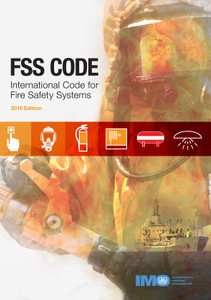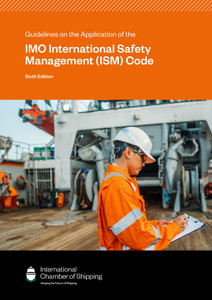
The 2010 FTP Code provides the international requirements for laboratory testing, type approval and fire test procedures for products referenced under SOLAS Chapter II-2. It comprehensively revises and updates the previous Code, adopted by the MSC in 1996.
This Code ensures uniformity in the application of fire testing requirements and is intended for use by the Administration and competent authority of the flag State when approving products for installation. It defines key terms and is appended with key fire test procedures. These include, but are not limited to, the test for non-combustibility, the smoke and toxicity test, the test for ‘A’, ‘B’ and ‘F’ class divisions and the test for vertically supported textiles and films. There are also annexes on products that may be installed without testing and/or approval and on fire protection materials, with reference to corresponding SOLAS and HSC regulations.
The present International Code for Application of Fire Test Procedures, 2010 (2010 FTP Code), adopted by the Maritime Safety Committee (MSC) of the Organization by Resolution MSC.307(88), is the result of a strenuous five year work programme. The Code, designed and approved by IMO as a mandatory instrument under Chapter II-2 of the SOLAS Convention and the International Code of Safety for High-Speed Craft, 2000 (2000 HSC Code), is a direct succession to the FTP Code adopted by Resolution MSC.61(67) in 1996. In this respect, the new Code, which entered into force on 1 July 2012, has its structure conforming to that of the previous instrument. However, unlike the latter, it represents a self-contained instrument intended for direct application by the industry.
The 2010 FTP Code was developed with the aim of enhancing user friendliness, ensuring more uniform application of the requirements on fire testing and generalising the experience gained so far from the application of Resolution MSC.61(67). Bearing in mind the intent of developers to formulate the requirements for fire test procedures in a form that would be as close to general industry’s procedures as possible, one of the aims of the Code was to update references to all ISO applicable standards.
The present Code contains requirements for the testing process itself: testing laboratories, the format of test reports, and provides procedures of type and case by case approval of materials, components and structures intended for maritime applications. Taking due account of alternative designs and arrangements that have been made possible by virtue of SOLAS Regulation II-2/17, adopted by Resolution MSC.99(73) in 2000, the Code provides for the possibility of conducting alternative tests. This would be on the proviso that the level of safety of the tested materials, components and structures set by the Convention is not compromised and corresponds to at least that contained in its prescriptive requirements.
Resolution MSC.307(88) (adopted on 3 December 2010)
1 Scope
2 Application
3 Definitions
4 Testing
4.1 Fire test procedures
4.2 Testing laboratories
4.3 Test reports
5 Approval
5.1 General
5.2 Type approval
5.3 Case by case approval
6 Products which may be installed without testing and/or approval
7 Use of equivalents and modern technology
8 Period of grace for type approvals issued in accordance with the previous FTP Code
9 List of references
Annex 1 Fire test procedures
Part 1 Non-combustibility test
Part 2 Smoke and toxicity test
Part 3 Test for ‘A’, ‘B’ and ‘F’ class divisions
Part 4 Test for fire door control systems
Part 5 Test for surface flammability (test for surface materials and primary deck coverings)
Part 6 (Blank)
Part 7 Test for vertically supported textiles and films
Part 8 Test for upholstered furniture
Part 9 Test for bedding components
Part 10 Test for fire-restricting materials for high speed craft
Part 11 Test for fire-resisting divisions of high speed craft
Annex 2 Products which may be installed without testing and/or approval
Annex 3 Fire protection materials and required approval test methods
Annex 4 Interpretation of SOLAS, Chapter II-2, Regulations 5.3 and 6.2 (MSC/Circ.1120)
As a specialized agency of the United Nations, IMO is the global standard setting authority for the safety, security and environmental performance of international shipping. Its main role is to create a regulatory framework for the shipping industry that is fair and effective, universally adopted and universally implemented.
In other words, its role is to create a level playing field so that ship operators cannot address their financial issues by simply cutting corners and compromising on safety, security and environmental performance. This approach also encourages innovation and efficiency.
Shipping is a truly international industry, and it can only operate effectively if the regulations and standards are themselves agreed, adopted and implemented on an international basis. And IMO is the forum at which this process takes place.
- Number of Pages:
- 0
- Book Height:
- 0 mm
- Book Width:
- 0 mm
- Author:
IMO
- Preview:
- Yes
- ISBN:
- 9789280115482
- Published Date:
- January 2012
- Binding Format:
- Paperback
- Publication Date:
- January 2012






